How to Install a 30-Amp RV Outlet at Home…
Make sure your electrician understands that a 30-amp RV outlet is wired for single-pole 120 Volts!
Dear Readers,
I received this inquiry from a reader a few years ago. He was wondering about installing a 30-amp RV outlet on a residential 150-amp service panel.
“I have a 150-amp incoming service breaker box on the outside of the house. Can I install a 30-amp plug and breaker for an RV off of this box?”
And the answer is…
Yes, you certainly can install a 30-amp RV outlet at home. That is, as long as you keep a few things in mind while discussing this installation with your electrician and you have a few empty breaker positions.
Now, I’m not going to tell you that you can do this yourself if it’s your first electrical hookup project. And I am going to ask you to follow all local codes – that are different in each state and county. The safest way to do this to hire a licensed residential electrician, and get them to read this first.
Read what?
You may ask why an electrician needs to read an article from me before hooking up something as simple as a 30-amp RV outlet at home. And the answer is: Many residential electricians have never seen a TT-30 RV outlet which is definitely wired as single-pole 120 volts and NOT double-pole 240 volts – like the grandfathered-in home dryer outlet it resembles in this graphic.
Let’s engage the Wayback Machine
Back in the ’50s the National Electrical Code group thought it was a good idea to combine the ground and neutral conductors in receptacles used to power electric dryers and stoves.
This was done as a way to save copper wire. But it turned out to be a bad idea for a number of reasons we won’t go into here. The code was changed by the NEC in 1996 to require separate neutral and ground conductors for electric clothes dryers.
Hear ye, hear ye!
However, you can see how similar your RV’s 30-amp/120-volt shore power outlet is to a home dryer 30-amp/240-volt outlet. They are definitely NOT wired the same way.
Let it be known that ALL 30-amp RV shore power outlets are to be wired with a single-pole circuit breaker, and must measure 120 volts across the hot and neutral contacts.
That’s because your 30-amp RV outlet needs one neutral, one hot and one ground wire to be connected properly, as shown in this diagram. In fact, it’s wired exactly the same way as your 15- or 20-amp home outlets are, albeit with heavier 10-gauge wire, instead of 14- or 12-gauge wiring.
Never use this on a 30-amp RV outlet…
You must never allow an electrician to hook up a TT-30 RV pedestal outlet to a double-pole circuit breaker like this one. Doing so will send two hots and one ground to your RV shore power outlet. That works out to 240 volts AC from hot-leg to hot-leg, instead of the 120 volts from hot to neutral that your RV needs.
The source of the confusion is that many residential electricians may never have seen an RV 30-amp outlet, officially named a NEMA TT-30 (for Travel Trailer) receptacle. Yes, a TT-30 receptacle looks a lot like the original NEMA 10-30R – 230-volt dryer receptacle, which it definitely is not.
Always use this…
Note that you must use a single-wide circuit breaker, so it will only provide one hot-leg of 120 volts to your RV outlet. The other connections needed for the TT-30 outlet are the white/neutral conductor, and the green or bare-copper ground conductor.
What goes wrong if you accidentally wire a 30-amp TT-30 receptacle with 240 volts instead of 120 volts? Bad things will quickly happen if you plug your RV into it. So show your electrician this diagram first. If they argue with you that it’s really a 240-volt receptacle, show them the door and get a new electrician.
What are the possible damages?
Well, nearly every 120-volt appliance in your RV will burn up in a matter of seconds if you send in 240 volts to all your RV appliances and chargers, air conditioners, refrigerator, water heater, etc. And that’s because they’re all wired for 120 volts (except on some of the largest coaches).
So, all the expensive bits, such as your microwave, inverter/converter, refrigerator and media center will burn out very quickly. And if your air conditioner is powered up, it will quickly take out the control circuit board as well. It will be a sad day for your electrician when you tell him you expect him to pay for the damages.
Basic wiring practices
You’ll need to run at least 10-2 wire plus ground from your service panel to your pedestal location. Be sure to follow all local codes as to burial depth (if needed to go underground) and insulation type (direct burial vs. Romex, etc.). If you need to run it more than 100 feet you should consider heavier gauge wire, such as 8-2, plus ground. This will reduce the voltage drop you’ll get when pulling a lot of amperage over long distances.
I also highly recommend you get a weatherproof pedestal box with a built-in 30-amp circuit breaker. That will allow you to plug in and unplug from the outlet with no power applied. This will stop any electrical arcs from happening when plugging in under power, thereby increasing the life of your shore power cord and new outlet.
And be sure to measure ANY new electrical outlet for proper voltage before plugging your expensive RV into it.
But wait, there’s more….
Finally, if there’s any chance in the future that you might upgrade to an RV with a 50-amp shore power connection, now is the time to bite the bullet and put in a 50/30/20-amp pedestal box wired with 50 amp/240 volts rather than just the 30-amp outlet.
Yes, it will split off the 120 volts properly for the 30-amp TT-30 outlet. It will also have 50 amps at 240 volts available in the NEMA 14-50 receptacle for future expansion. Since a lot of your cost will be in the installation labor, doing this upgrade might only add 50% (or less) to the cost of installing a 30-amp-only pedestal.
But in a year or two you’ll thank yourself for being so smart and getting more than 3 times the electric power for a little extra money up front. So think long and hard before you put in a single 30-amp pedestal box when a 50/30/20-amp box would do everything you could possibly want.
And yes, all of this will work with a 150-amp home service panel, as long as your panel has space for the correct size circuit breaker(s) and wiring.
Let’s play safe out there… Mike

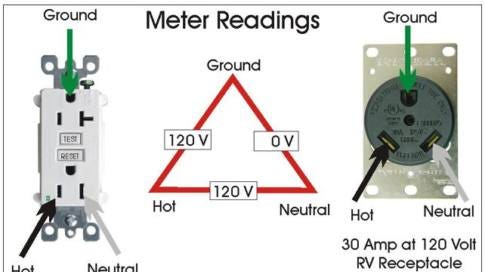


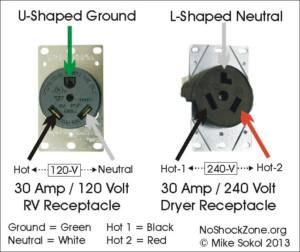



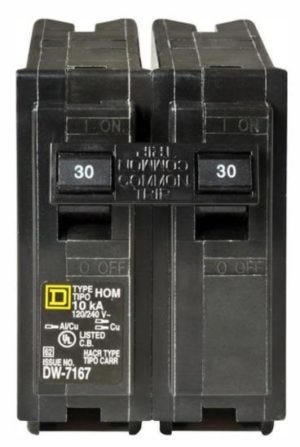
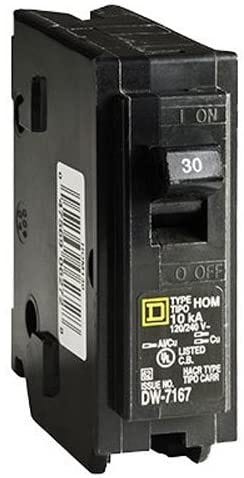
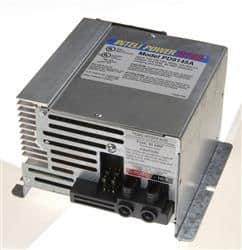

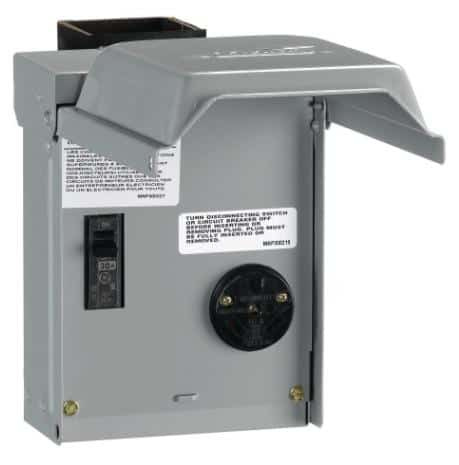
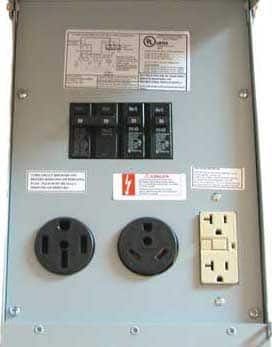

In my installation, I needed a GFCI breaker. However, Square D does not make a single pole 30 amp GFCI breaker in the HOM type. Instead, we used a two pole 30 amp GFCI breaker, but utilized only one side of the breaker to provide 120v. In your opinion, could or should this have been done differently?
Another advantage of properly wiring an RV outlet at home:
with the proper EV adapter, you may also be able to recharge your EV (or the EV of a visiting friend or family member).